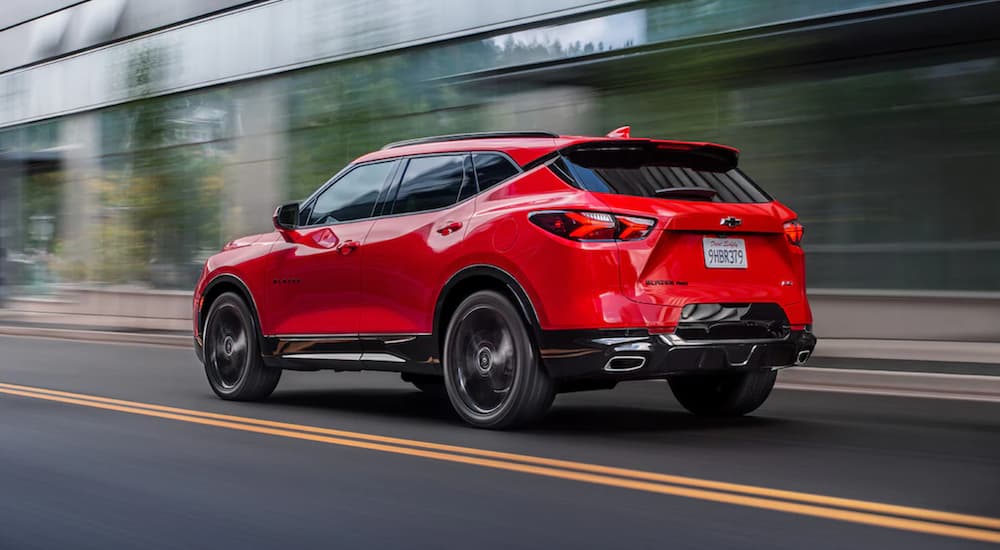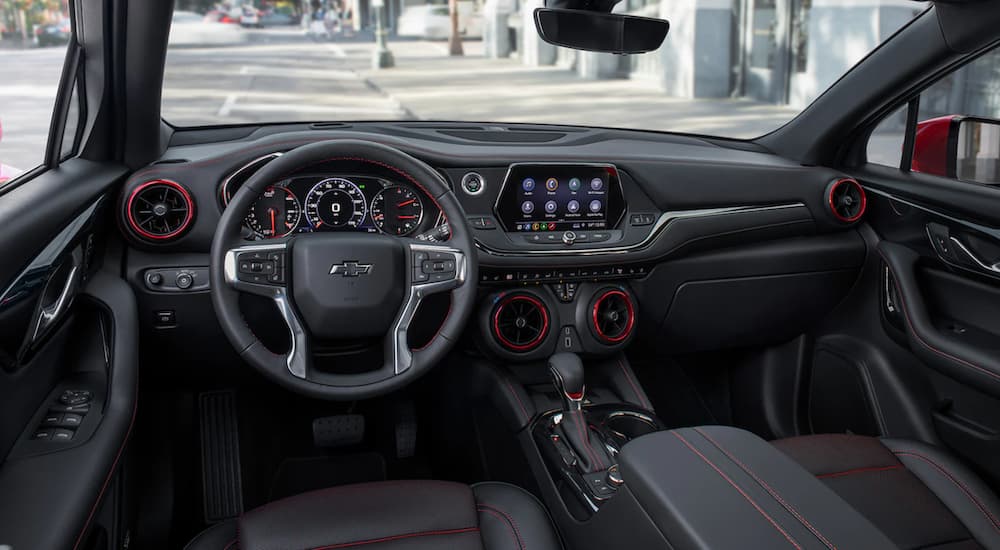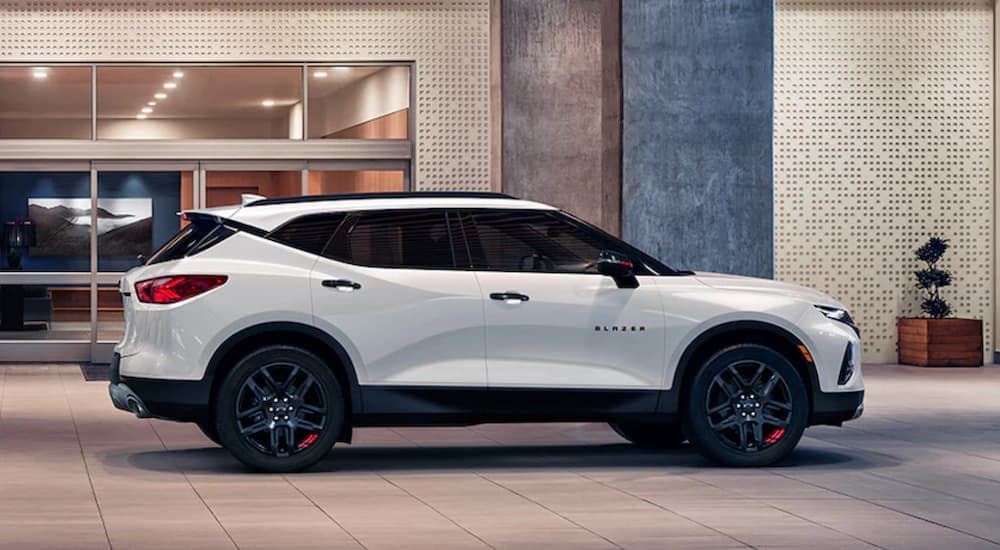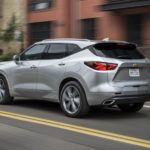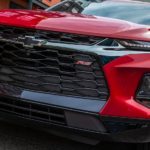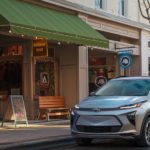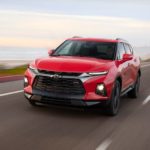As the saying goes, “if it ain’t broken, don’t fix it.” No matter how you slice it, this simple yet powerful sentence can make all the difference between success and failure. This saying can be interpreted in a few ways, but it will always have the same meaning. Whether we’re talking about a tinkerer trying to modify a perfectly fine toaster, or a vehicle manufacturer making drastic changes to a popular model, it’s sometimes best to leave the foundation of something great intact. This is because some of the best vehicles are so memorable not only because of a particular aspect but rather the sum of its parts that create the full experience. Why do we mention all of this, you may ask? It’s simple; this is the design philosophy behind the new 2022 Chevy Blazer.
Why is the 2022 Blazer designed like this, and is this more of a negative than a positive? The first thing we must do is identify the key areas where features have remained the same and where the changes can be found. Something to mention about the Blazer as a whole is that the 2022 model is the continuation of an entirely refreshed model that was released after a hiatus of nearly 15 years. Launching in 2019, this new and improved Blazer was a force to be reckoned with thanks to a consistent blend of performance, efficiency, and the versatility that you’d expect with a mid-size SUV. The 2022 variant has many of the same features that were found inside of the returning model a couple of years ago, but there are still some new surprises in store.
Getting Around Town
Last year, the Chevy Blazer had three available engines, but this year this has been reduced to two. Normally, this could be seen as a negative, but fortunately, the engine that got eliminated was the weakest of the three last year. That means that the 2022 Blazer has two powerful powertrains, including one turbocharged and one V6. This is further complemented by the omission of last year’s base trim, making the new base Blazer a more feature-packed machine that’s now vastly efficient thanks to a standard turbocharged 2.0L 4-cylinder engine.
That’s right, fuel efficiency is superb thanks to the greener powertrain, and driving feels equally as smooth with a 9-speed automatic transmission. Specifications of this engine include 228 hp and 258 lb-ft of torque, with EPA-estimated ratings of 22 MPG in the city and 29 MPG on the highway for front-wheel drive Blazer models. All-wheel drive Blazer models will have ratings of 22 MPG city and 27 MPG highway, which is less of an impact on fuel consumption than other models may possess on their all-wheel drive variants. Additionally, this engine can tow up to 1,500 lbs, meaning it’s capable of the occasional towing task.
The next available engine for the 2022 Blazer is the one that has been a part of the model lineup since its return in 2019. We believe this is the definitive option for the Blazer for a reason, and that’s because of its 308 hp and 270 lb-ft of torque. Part of these performance gains is a greater towing capacity of up to 4,500 lbs when appropriately equipped. Driving feels equally as smooth, however, thanks to the same 9-speed automatic transmission as the base engine. Front-wheel drive models with the V6 will earn ratings of roughly 20 MPG in the city and 27 MPG on the highway, while all-wheel drive models will have ratings of around 19 MPG in the city and 26 MPG on the highway, which are again very close in comparison.
Is Mid-Size Enough?
We recommend the 2022 Blazer for drivers who want a vehicle that’s more spacious than their current ride. Mid-size SUVs can be a gamble in this regard but fret not with the Blazer as it’s a spacious ride for everyone. We’ll be looking at examples from a model that doesn’t have the sunroof installed, as this is the best way to maximize your vehicle’s headroom, albeit not by much. Sitting in the front row of the Blazer gives you 39.8-inches of headroom and 41-inches of legroom. In the backseat, the three passengers would be treated to an excellent 38.6-inches of headroom and 39.6-inches of legroom, and these measurements are rather similar to the front row, which isn’t entirely too common.
Another important detail that manufacturers have to consider when designing an SUV is cargo space, as some may prefer not to tow their belongings, or the situation may not call for it. In these cases, the Blazer still impresses with a total of up to 64.2 cubic feet for you to utilize. It’s worth mentioning that these measurements are taken from the vehicle with the back row of seats folded downwards. If they’re kept in their default position, this number will decrease to a still very respectable 30.5 cubic feet in the trunk. In our opinion, and one that’s shared by numerous fans and critics alike is that the 2022 Blazer resolidifies the idea that a mid-size SUV is a perfectly reasonable choice for a wide range of drivers.
Notable Features to Mention
There’s still plenty to mention about the 2022 Blazer, and one thing we want to mention is that this year’s model is a very impressive machine from a technological standpoint as well. What we mean by this is that the Blazer very much feels like a vehicle from the year 2022, and this is best seen in its wide feature set that includes an infotainment center that comes with a standard 8-inch screen. For media purposes, this is phenomenal, and it doesn’t stop there as the Blazer is also a reliably safe vehicle. Because of a standard integration of the Chevy Safety Assist package, every Blazer is fitted with some of the most well-known safety features on the market today to assist with city or highway travel and could help you avoid accidents altogether with advanced sensors.
Wait for Next Year?
Should you wait for next year’s Blazer? We don’t think so because even though there is a lot of similar features on this Blazer, there is still a lot of new things to love, like the two-tone roof option available on most trims, a refreshed look for the Premier trim, and two new colors – Nitro Yellow Metallic and Blue Glow Metallic. While there is always the possibility of a redesign, we just don’t think you are going to want to wait to snap this model up. On the one hand, we’ve had models that receive monumental upgrades over a short amount of time, but other models can be stuck in the same generation for more than several years. Honestly, we think there is no time like the present to buy a car that doesn’t need to be fixed.
We were glad to see the Blazer return in 2019 when it did, and keep in mind this was years after its original discontinuation. Among its return, it was the underdog of sorts, and now that we can shine a closer light on it, especially when compared to its closest competitors, there’s plenty here that reminds us why Chevy is so revered.
